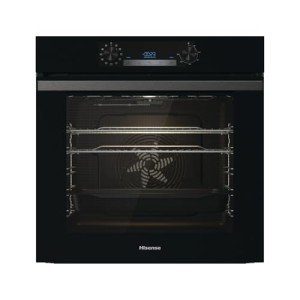The Benefits and Design Considerations of a Kitchen with a Built-In Oven
In modern kitchen style, built-in ovens have actually become a prominent feature, offering both functionality and aesthetics that accommodate modern-day lifestyles. This article dives into the advantages of integrating a built-in oven into the kitchen area and highlights important style considerations to ensure a cohesive and useful kitchen environment.
Understanding Built-In Ovens
Built-in ovens are developed to be flawlessly integrated into kitchen cabinets, which distinguishes them from traditional freestanding ovens. These appliances are available in different setups, including single-wall ovens, double-wall ovens, and even microwave that share the exact same integrated cabinet space.
Typical Types of Built-In Ovens
| Type | Description | Ideal Use |
|---|---|---|
| Single Wall Oven | A standard oven with one compartment for baking and roasting. | Little cooking areas or daily baking. |
| Double Wall Oven | Two different oven compartments enabling simultaneous cooking. | Large families or regular bakers. |
| Combination Oven | A microwave and traditional oven in one system. | Quick meals and flexible cooking alternatives. |
| Steam Oven | An oven created particularly for steam cooking. | Health-focused cooking and intricate recipes. |
Advantages of Built-In Ovens
The popularity of built-in ovens can be credited to several key advantages, consisting of:
1. Space Efficiency
Built-in ovens are created to fit within existing cabinets, maximizing valuable floor area. This feature is particularly useful in smaller kitchens, where every square foot counts.
2. Structured Appearance
The seamless combination of a built-in oven creates a refined look in the kitchen. Offered in various surfaces, built-in ovens can match or match kitchen cabinetry, offering a contemporary and unified design aesthetic.
3. Boosted Functionality
Built-in ovens typically provide innovative features, such as smart innovation, several cooking modes, and even self-cleaning alternatives. This can enhance cooking experiences and enhance the performance of meal preparation.
4. Enhanced Accessibility
With appropriate setup of a built-in oven, users can increase ease of access, preventing the requirement to bend over to reach a lower oven compartment. Eye-level cooking appliances allow cooks to monitor their dishes quickly and lower the risk of burns from bending down to look at a baking item.
5. Energy Efficiency
Many contemporary built-in ovens make use of innovative cooking innovation that can lead to lower energy usage. Functions like convection cooking can reduce cooking times while guaranteeing even heating, ultimately conserving energy.
Design Considerations for a Kitchen with Built-In Ovens
While built-in ovens offer many benefits, cautious factor to consider in the style phase is vital to maximize their benefits and incorporate them successfully into the kitchen layout. Here are some key factors to think about:
1. Cabinet Configuration
When preparing for a built-in oven, house owners need to thoroughly consider cabinet designs and setups. Adequate ventilation is vital for proper operation. It's vital to leave adequate space for airflow, which can vary depending upon the oven design.
2. Height Preference
The setup height of the oven need to be determined based on the primary users. Built in oven and gas hob packages b&q built-in oven situated at eye level can make it more practical to use, particularly for those who frequently cook.
3. Complementary Appliances
In a kitchen setting, built-in ovens often complement other built-in appliances such as microwave ovens and warming drawers. Choosing appliances that work well together can further enhance the kitchen's design.
4. Aesthetic Choices
Selecting finishes and colors that balance with the general kitchen style is essential. Built-in ovens are available in numerous choices, including stainless steel, black, and even custom cabinet completes that can disappear effortlessly into the kitchen cabinetry.
5. Budget plan Considerations
Built-in ovens can range substantially in rate, from affordable options to high-end models filled with features. It's necessary to set a realistic spending plan that enables the wanted specifications without jeopardizing the total kitchen renovation.
FAQs
1. What is the difference between a built-in oven and a freestanding oven?
Built-in ovens are integrated into cabinets and offer a seamless appearance, while freestanding ovens are standalone systems that can be moved easily.
2. Do built-in ovens need professional setup?
Yes, built-in ovens typically need expert installation due to their integration with cabinetry and electrical requirements.
3. Are built-in ovens more pricey than standard ovens?
In general, built-in ovens can be more expensive due to their installation process and advanced functions, but there are many options available to suit varying spending plans.
4. How do I keep a built-in oven?
Routine cleaning and upkeep, such as utilizing the self-clean function, checking seals, and guaranteeing appropriate ventilation, are important for keeping a built-in oven.
5. Can built-in ovens be utilized in smaller kitchen areas?
Yes, built-in ovens can be advantageous in smaller sized kitchen areas since they make the most of area performance and can be set up at eye level for benefit.
Integrating a built-in oven into a kitchen design is an excellent option for enhancing performance and visual appeals. By considering the design pointers and advantages gone over in this article, homeowners can develop an unified kitchen space that accommodates their cooking requirements while looking stylish and trendy. Whether renovating an existing kitchen or developing a brand-new one, built-in ovens provide a level of elegance and practicality that lines up flawlessly with modern cooking practices.

